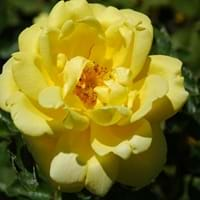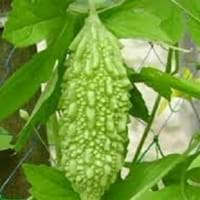Life Span
Perennial
Annual
Origin
Hybrid origin
North America, Mexico, Central America
Types
Not Available
Not Available
Number of Varieties
Not Available
Habitat
gardens, Pastures, Prairies, Terrestrial, Tropical regions
Loamy soils, Moist Soils, Subtropical climates
USDA Hardiness Zone
3-8
5-7
Sunset Zone
1a, 1b, 2a, 2b, 3a, 3b, 4, 5, 6, 7, 8, 9, 10, 11, 12, 13, 14, 15, 16, 17, 18, 19, 20, 21, 22, 23, 24
A1, A2, A3, H1, H2, 1a, 1b, 2a, 2b, 3a, 3b, 4, 5, 6, 7, 8, 9, 10, 11, 12, 13, 14, 15, 16, 17, 18, 19, 20, 21, 22, 23, 24
Habit
Oval or Rounded
Vining/Climbing
Flower Color
Not Available
Yellow, Orange, Dark Green
Flower Color Modifier
Not Available
Bicolor
Fruit Color
Non Fruiting Plant
Yellow, Dark Green
Leaf Color in Spring
Not Available
Green, Dark Green
Leaf Color in Summer
Not Available
Green, Dark Green
Leaf Color in Fall
Not Available
Green, Dark Green
Leaf Color in Winter
Light Green
Not Available
Leaf Shape
Pinnate
Palmate
Plant Season
Summer, Fall
Summer, Fall
Sunlight
Full Sun, Partial Sun
Full Sun
Growth Rate
Fast
Very Fast
Type of Soil
Loam, Sand
Loam, Sand
The pH of Soil
Acidic, Neutral
Neutral
Soil Drainage
Well drained
Well drained
Bloom Time
Early Summer, Summer, Late Summer, Early Fall
Indeterminate
Tolerances
Drought
Drought
Where to Plant?
Ground, Pot
Ground
How to Plant?
Grafting, Stem Planting, Transplanting
Seedlings
Plant Maintenance
Medium
Medium
Watering Requirements
Form a Soil ring to water efficiently, Requires regular watering, Water twice a day in the initial period, Water when soil is dry
Keep ground moist, Requires regular watering
In Summer
Lots of watering
Lots of watering
In Spring
Moderate
Moderate
In Winter
Average Water
Average Water
Soil pH
Acidic, Neutral
Neutral
Soil Type
Loam, Sand
Loam, Sand
Soil Drainage Capacity
Well drained
Well drained
Sun Exposure
Full Sun, Partial Sun
Full Sun
Pruning
Prune if you want to improve plant shape, Remove damaged leaves, Remove dead leaves, Remove deadheads, Shape and thin as needed
Cut out old flower stalks, Prune after flowering, Remove dead or diseased plant parts
Fertilizers
All-Purpose Liquid Fertilizer, organic fertlizers
Apply 10-10-10 amount, Apply 12-12-12 amounts, Nitrogen, Phosphate, Potassium
Pests and Diseases
Aphids, Bacterial Diseases, Mites, Slugs
Aphids, Army-worms, Bacteria wilt, Bacterial leaf spot, Blight, Cucumber beetles, Cutworms, Fusarium leaf spot, Red spider mite
Plant Tolerance
Drought
Drought, Full Sun, Salt and Soil Compaction
Flower Petal Number
Not Available
Single
Edible Fruit
Not Available
Yes
Foliage Texture
Not Available
Coarse
Foliage Sheen
Not Available
Matte
Attracts
Not Available
Bees, Flies, Flying insects
Allergy
no allergic reactions
Hypoglycaemic Coma, Irregular Heart Rhythm, Miscarriage
Aesthetic Uses
Beautification, Bouquets
Not Used For Aesthetic Purpose
Beauty Benefits
Not Available
Acne, For treating wrinkles, Improve hair condition, Nourishes scalp, Removes dandruff
Environmental Uses
Air purification
Food for animals, Insect Repellent
Medicinal Uses
No Medicinal Use
Anti-fungal, Detoxification, Diabetes, Gastrointestinal disorders, Weight loss
Part of Plant Used
Flowers
Fruits
Other Uses
Showy Purposes, Used as Ornamental plant
Cosmetics, Repellent, Use in Chinese herbology
Used As Indoor Plant
No
No
Used As Outdoor Plant
Yes
Yes
Garden Design
Container, Cutflower, Feature Plant, Foundation, Mixed Border
Dried Flower/Everlasting, Vine
Botanical Name
ROSA 'Allgold'
CUCURBITA pepo 'Bicolor Pear'
Common Name
Floribunda Rose
Bicolor Pear Gourd, Ornamental Gourd
In Hindi
रोजा allgold
करेला
In German
rosa Allgold
Bittermelone
In French
rosa TousPlaqué
Momordica charantia
In Spanish
rosa allgold
Momordica charantia
In Greek
rosa allgold
Not Available
In Portuguese
rosa allgold
Momordica
In Polish
rosa allgold
Przepękla ogórkowata
In Latin
Rosa allgold
Not Available
Phylum
Not Available
Spermatophyta
Class
Not Available
Magnoliopsida
Family
Rosaceae
Cucurbitaceae
Clade
Angiosperms, Eudicots, Rosids
Not Available
Tribe
Not Available
Not Available
Subfamily
Rosoideae
Cucurbitoideae
Importance of Floribunda Rose and Bitter Gourd
Want to have the most appropriate plant for your garden? You might want to know the importance of Floribunda Rose and Bitter Gourd. Basically, these two plants vary in many aspects. Compare Floribunda Rose and Bitter Gourd as they differ in many characteristics such as their life, care, benefits, facts, etc. Every gardener must at least have the slightest clue about the plants he wants to plant in his garden. Compare their benefits, which differ in many ways like facts and uses. The medicinal use of Floribunda Rose is No Medicinal Use whereas of Bitter Gourd is Anti-fungal, Detoxification, Diabetes, Gastrointestinal disorders and Weight loss. Floribunda Rose has beauty benefits as follows: Not Available while Bitter Gourd has beauty benefits as follows: Not Available.
Compare Facts of Floribunda Rose vs Bitter Gourd
How to choose the best garden plant for your garden depending upon its facts? Here garden plant comparison will help you to solve this query. Compare the facts of Floribunda Rose vs Bitter Gourd and know which one to choose. As garden plants have benefits and other uses, allergy is also a major drawback of plants for some people. Allergic reactions of Floribunda Rose are no allergic reactions whereas of Bitter Gourd have Hypoglycaemic Coma, Irregular Heart Rhythm and Miscarriage respectively. Having a fruit bearing plant in your garden can be a plus point of your garden. Floribunda Rose has showy fruits and Bitter Gourd has showy fruits. Also Floribunda Rose is not flowering and Bitter Gourd is not flowering . You can compare Floribunda Rose and Bitter Gourd facts and facts of other plants too.





